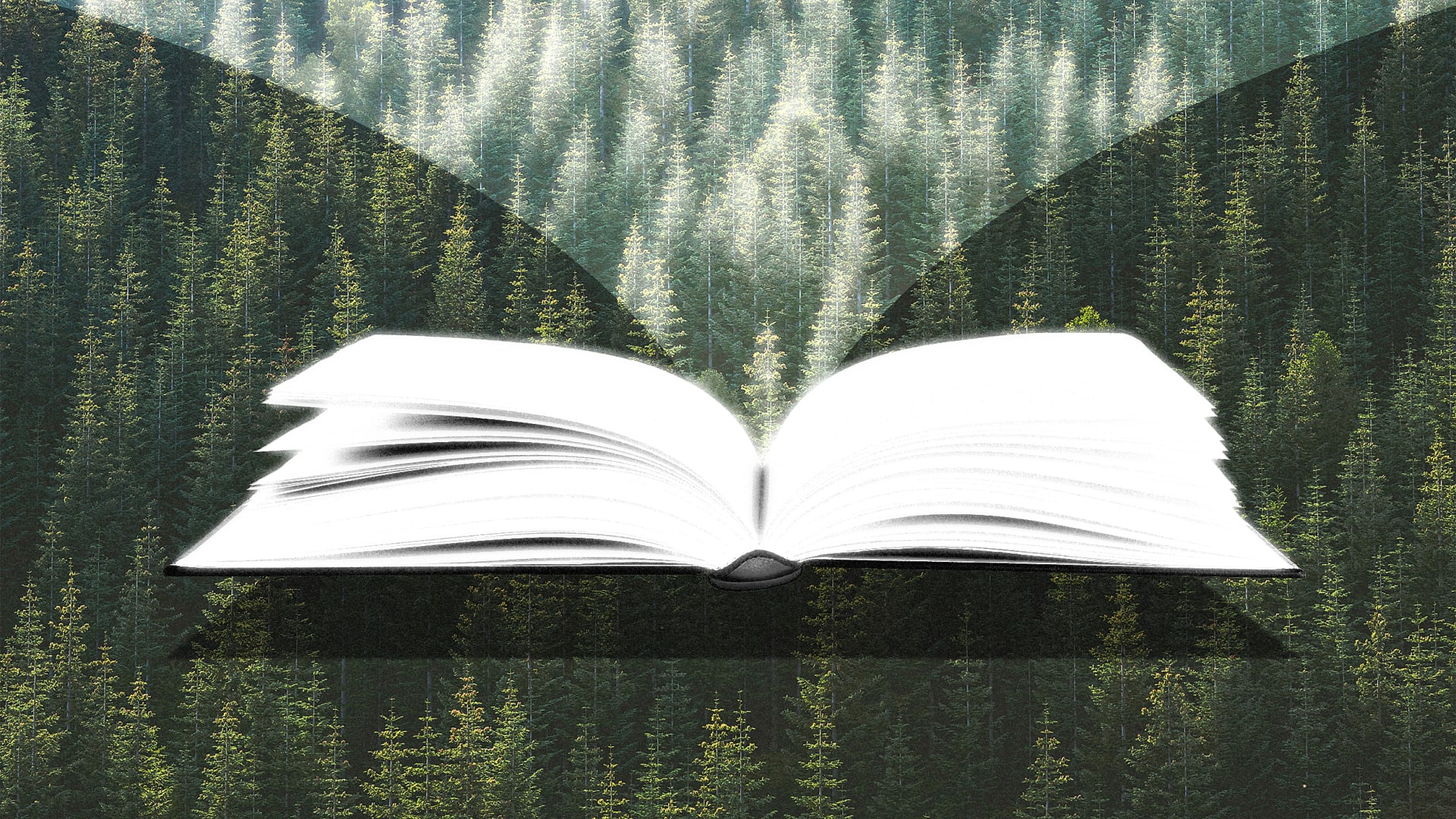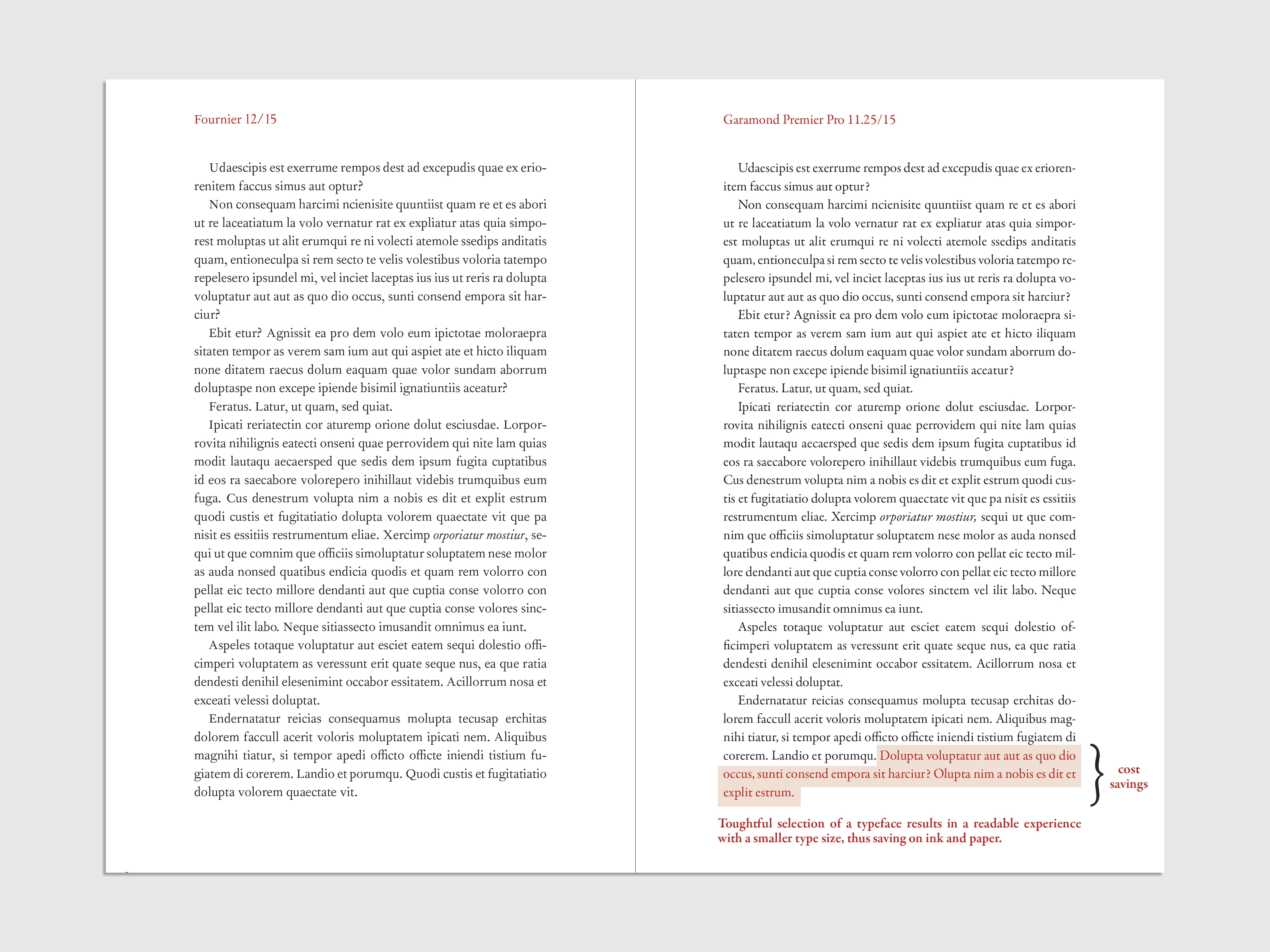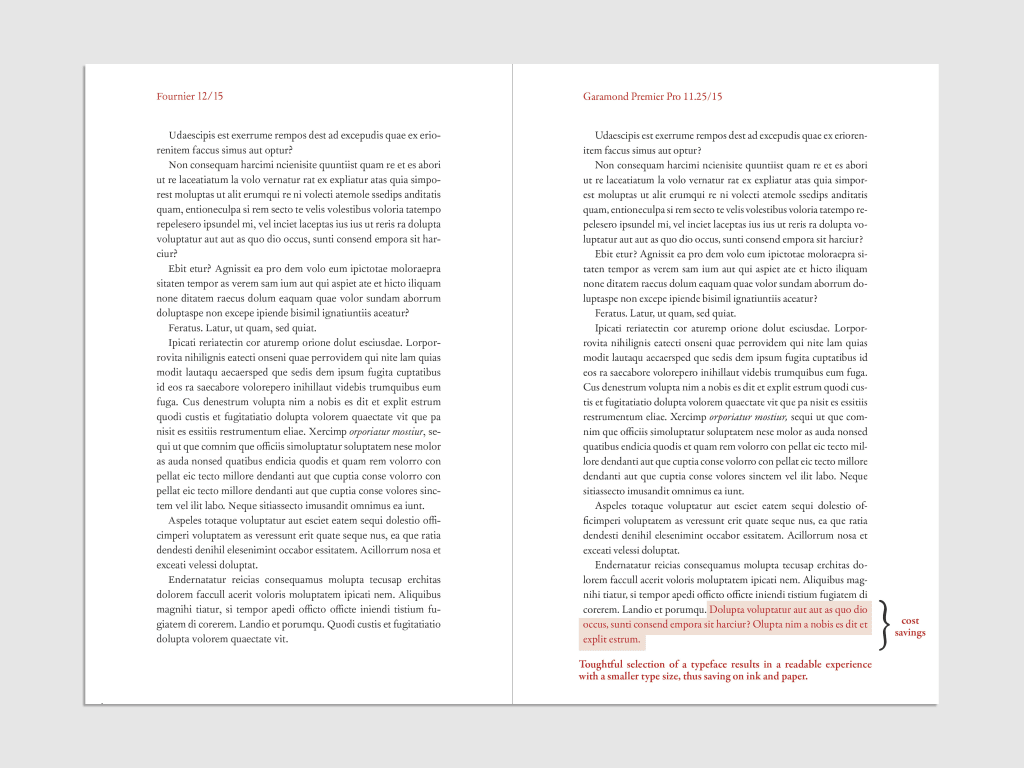
As you’re racing through a thriller or romance novel, you’re not thinking about the fonts or layout on each page. But a designer has spent hours poring over each element on the page to create the most delightful reading experience.
Just ask Leah Carlson-Stanisic, creative director at Harper Collins, one of the four biggest publishing houses in the the world. When a manuscript comes across her desk, she considers what font best expresses the content. Historical fiction might warrant a font created in the 1800s. A book about technology might require a more recent sans serif. “It’s 30% experience and 70% intuition,” she says.
But over the past three years, Harper Collins’ designers have put their skills towards a new mission: saving paper. In an effort to reduce the carbon footprint of each book, they’re tweaking fonts, layout, and even the ink used. The goal is to pack more into each page, while ensuring that the pages are as readable as ever. And so far, these subtle, imperceptible tweaks have saved 245.6 million pages, equivalent to 5,618 trees.

HarperCollins’ Christian publishing division, Zondervan Bibles, first came up with the idea of using design to save paper. Bibles have historically used upwards of 2,500 pages. In 2015, Zondervan’s designers determined that if they used different fonts and adjusted the page layout, they could reduce the number of sheets used. It would also cut HarperCollins’ printing costs. They developed a new compact typeface called the NIV Comfort Print. Ultimately, it saved more than 350 pages per bible, resulting in a total savings of 100 million pages in 2017. Stacked up, that would be the equivalent to four times the height of the Empire State Building.
Tracey Menzie, the VP of creative operations and production at HarperCollins, wanted to see if the company could apply these learnings to other kinds of books, including novels and nonfiction. “When we first started thinking about this, it was a bit of an upheaval,” she says. “You’re taking something that people have done for their entire careers and telling them to think about it in an entirely new way.”
The team got to work. They tested their theories with a large book in their catalog—over 600 pages—by creating 50 versions of it using different fonts. Harper Collins uses a wide range of off-the-shelf fonts in their books, rather than custom ones. As they ran these experiments, they observed that some fonts were more compact, resulting in fewer total pages, while remaining easy to read. So they curated a list of 15 fonts they determined are the most eco-friendly, which will be the preferred fonts from now on.
In the end, the designers found that clever font selection, coupled with a thoughtful layout design that reduced white space, resulted in more words per page. For instance, in one example, the same text set to Garamond Pro resulted in many more words on the page compared to Bembo. Both fonts are fairly similar, with a classic serif look. And when you place them side by side, the differences are imperceptible. “The goal is to make these changes without the reader even seeing the difference,” says Menzie.
But there were also many complexities in the process. For instance, they had to consider the heaviness of the font. One font they used frequently is Bodoni, which was first created in 1798, and appears frequently in Harper Collins books. As a very heavy font, they realized they could fit more words on a page, while keeping it readable. But they also found that with very large letters, like subheadings, the ink would bleed through the paper, making it hard to read the words on the next page.
“The designer is always balancing out not just a single page, but also what’s on the page before and the page after,” says Carlson-Stanisic. “Ultimately, this ended up with finding fonts that used less ink, in addition to less paper, which is also better for the planet.”
Still, there is complex math involved with cutting pages from books. Printers produce very large sheets which are then cut and folded into what ultimately becomes segments of 16 pages. When trying to cut pages from the book, designers need to be able to remove multiples of 16 pages. For the book So Fetch, for instance, using a more eco-friendly font saved nearly a million pages in total over the entirety of its print run. “We want to make sure our big titles, by prominent authors, are using these eco-fonts,” says Carlson-Stanisic. “It adds up a little bit at a time, saving more and more trees.”
Menzie points out that the book publishing industry is fiercely competitive. While Harper Collins saves resources with these sustainable practices, it can’t come at the cost of the reader experience. But the team found that good design allowed them to cut pages without the reader noticing at all. “When we experimented with these fonts, we realized they weren’t a limitation at all,” she says. “It was simply a different approach, that didn’t sacrifice aesthetics. Now, our designers are constantly questioning how we do things and thinking about ways to make things more sustainable.”
Recognize your company’s culture of innovation by applying to this year’s Best Workplaces for Innovators Awards before the final deadline, April 5.
-
Stop saying climate change will destroy the world. The truth is far scarier
-
Catan’s new board game lets you pit fossil fuels against green energy
-
5 helpful Amazon Fire TV tricks to superpower your streaming
-
Why most workplace wellness benefits don’t actually work


